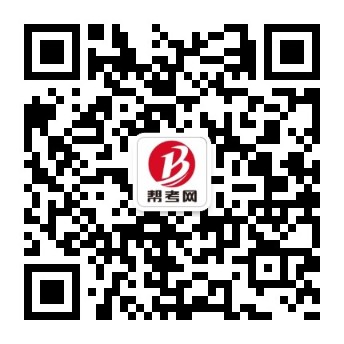
下载亿题库APP
联系电话:400-660-1360

下载亿题库APP
联系电话:400-660-1360

请谨慎保管和记忆你的密码,以免泄露和丢失

请谨慎保管和记忆你的密码,以免泄露和丢失

最近,有小伙伴在询问最后阶段,考研英语该如何备考才最有效。最后阶段,我们应该将备考的重点放在复习和了解考试上,多去练习历年真题和模拟试题。下面,帮考网为大家带来考研初试的一些模拟试题,一起来看看吧。
Technology is a two-edged sword. Rarely is this as clear as it is in the realm of health care. Technology allows doctors to test their patients for genetic defects——and then to turn around and spread the results throughout the world via the Internet. For someone in need of treatment, that\\'s good news. But for someone in search of a job or an insurance policy, the tidings can be all bad.
Last week President Bill Clinton proposed a corollary to the patients\\' bill of rights now before Congress: a right to medical privacy. Beginning in 2002, under rules set to become law in February, patients would be able to stipulate the conditions under which their personal medical data could be divulged. They would be able to examine their records and make corrections. They could learn who else had seen the information. Improper use of records by a caregiver or insurer could result in both civil and criminal penalties. The plan was, said Clinton, “an unprecedented step toward putting Americans back in control of their own medical records.”
While the administration billed the rules as an attempt to strike a balance between the needs of consumers and those of the health-care industry, neither doctors nor insurance companies were happy. The doctors said the rules could actually erode privacy, pointing to a provision allowing managed-care plans to use personal information without consent if the purpose was “health-care operations.” That, physicians said, was a loophole through which HMOs and other insurers could pry into the doctor-patient relationship, in the name of assessing the quality of care. Meanwhile, the insurers protested that the rules would make them vulnerable to lawsuits. They were especially disturbed by a provision holding them liable for privacy breaches by “business partners” such as lawyers and accountants. Both groups agreed that privacy protections would drive up the cost of health care by at least an additional $3.8 billion, and maybe much more, over the next five years. They also complained about the increased level of federal scrutiny required by the new rules\\' enforcement provisions.
One aim of the rules is to reassure patients about confidentiality, thereby encouraging them to be open with their doctors. Today various cancers and sexually transmitted diseases can go untreated because patients are afraid of embarrassment or of losing insurance coverage. The fear is real: Clinton aides noted that a January poll by Princeton Survey Research Associates found that one in six U.S. adults had at some time done something unusual to conceal medical information, such as paying cash for services.
注(1):本文选自By EVAN THOMAS Newsweek; 11/08/99, Vol. 134 Issue 19, p67, 1/2p, 1c
注(2):本文习题命题模仿对象2003年真题text 2
1. The author begins his article with “technology is a two-edged sword” to _____________.
[A] show that doctor‘s improper use of technology can end up in bad results
[B] call on people‘s attention to the potential danger technology can bring to us
[C] warn of the harm patients are prone to suffer
[D] show the advantages and disadvantages of technology
2. According to the proposal made by President Clinton, patients will be able to do the following EXCEPT _____________.
[A] enjoy more rights to their medical records
[B] be open with their doctors
[C] decide how to use their medical information
[D] sue their insurers for improper use of their medical records
3. Doctors tend to think that the rules _____________.
[A] may ruin doctor-patient relationship
[B] can do more harm than good
[C] will prevent doctors from doing medical research
[D] will end up in more health care cost and poorer medical service
4. The example of the January poll by Princeton Survey Research Associates is used to show that __________________.
[A] American patients‘ concealment of their medical information has become a big concern
[B] a large portion of patients would rather leave their diseases untreated
[C] concealing medical information is widespread in the U.S.
[D] paying cash for medical service is a common practice among American patients
5. From the article we can learn that ________________.
[A] American government will tighten its control over the use of patients‘ personal information.
[B] doctors and insurers are both against the rules for the same reasons
[C] patients are entitled to have complete control of their medical information
[D] the new rules put insurers in a very disadvantageous position
答案:ABBAD
题目分析
1. 答案为A,属推理判断题。文章以医生利用先进的互联网技术传播病人医疗信息会有助于治疗某些病人的疾病,但同时又给一些病人在就业和购买保险方面带来困难为例说明保护病人医疗信息的重要性,以及不当使用技术可能带来的不良后果。
2. 答案为B,属事实细节题。“be open with their doctors ”只是这项法规试图达到的效果,并不是该法规赋予病人的权利。因此答案应该是B.
3. 答案为B,属事实细节题。文章引用医生的观点认为新法规不但不利于保护病人的隐私,反而会actually erode privacy,由此可见答案应该是B.
4. 答案为A,属推理判断题。前文讲到了病人因为羞于启齿或者担心失去保险赔付而隐瞒病情,使疾病得不到治疗;然后说The fear is real. 继而引用普利斯顿调查研究协会的调查结果,意在说明这一问题的严重性。
5. 答案为D,属事实细节题。文章中提到保险公司的反对意见时,引用了保险公司的说法:the rules would make them vulnerable to lawsuits.由此可见答案应该是D.A项中提出的政府加强对病人私人信息的控制的说法是不正确的,因为保险公司抗议的是政府要加强对法规实施情况的审查(the increased level of federal scrutiny required by the new rules\\' enforcement provisions)。
以上就是帮考网为大家带来的全部内容,希望能给大家一些帮助。帮考网提醒:2021年考研正式报名已经开始,在预报名阶段未来得及报名的小伙伴要注意了。另外,小伙伴们如果还有其他关于考研信息的疑问,也可以留言咨询哦。
 22
22以前年度的普通研究生入学考试成绩还能查询吗?:以前年度的普通研究生入学考试成绩还能查询吗?以前的考研成绩能查,成绩查询可以登录中国研究生招生信息网,根据自己报考研究生考试的报名号登陆,即可查询以前的考研成绩。
 44
44研究生入学考试要考哪几门?:研究生入学考试要考哪几门?(1)初试是每年1月份全国统考,考试科目分为政治(满分100)、外语(满分100)、专业课一(如数学)、专业课二。公共课包含政治、外语、数学,由全国统一命题。专业课由各学校自主命题。有些专业课统一命题进行联考。有的专业不考数学,考由学校命题的两门专业课。(2)复试分为面试和笔试,学校专业不同,科目形式设置会有不同。
 35
35普通研究生入学考试现场确认必须要本人到吗?:普通研究生入学考试现场确认必须要本人到吗?现场确认时,报考者要带着本人身份证、学位证、学历证等证件的原件和复印件,原件由现场老师验查,复印件直接提交给现场老师。如果现场确认时审核出材料不实,考生将被取消录取资格,确认无误后本人要签字,这也是不能找人代替的原因之一。
 00:41
00:412020-06-06
 00:44
00:442020-06-06
 00:28
00:282020-06-06
 00:27
00:272020-06-06
 00:33
00:332020-06-06

微信扫码关注公众号
获取更多考试热门资料